A gripping account by Maj Gen (Retd) S C Sabharwal, VrC
67 Field Regiment was located at Bongaon on the outskirts of Kolkata (then Calcutta) when I joined them from the School of Artillery in July 1971. There was already a heavy influx of refugees from East Pakistan, and all space either side of the roads leading East to the border areas were overflowing with humanity in the most miserable conditions one can think of. Despite the succour being provided by the West Bengal government and many voluntary organisations in terms of food, tarpaulins, clothing, some medical attention etc, the life for them was subhuman to say the least. What must have added to their miseries was the all-pervading stench from the jute stalks rotting in shallow water channels running alongside the roads. Even if one drove a jeep at crawling speeds that were possible, it was hard to avoid brushing an animal, a human or a small tarpaulin shelter.
Towards the middle of October, it gradually became clear that operations were in the offing as more equipment, units and formations poured into West Bengal. Affiliations were becoming clearer and a marrying up ensued. 8 MADRAS, the Infantry Unit to which my battery was affiliated was tasked to provide an intact front opposite the Pakistani unit, which was deployed some distance from the border at Petrapol on the Calcutta-Jessore Road. My Battery was operationally deployed – all ready to shoot if and when necessary. Our Troops and their opposite numbers from Pakistan occasionally exchanged some Machine Gun fire and Mortar Bombs. A sound ranging base had also been deployed to locate Pakistani guns/mortars to enable us to shoot at them!
The rest of the regiment and formations meanwhile were busy training and re-equipping as required while operational plans were being thrashed out at higher Headquarters. During this period, certain Mukti Bahini cadres were also being trained in the handling of arms and other warlike stores, which they carried. In this context, I was tasked to train a dozen of these young boys, in Control of Artillery Fire by Other Arms. My fluency in Bengali came in very handy during this training period and the boys were motivated learners. They were given practical experience of controlling the fire with live firing – into the no man’s land! They subsequently put this newly acquired skill to good use as they went on their assigned raids. Border Security Force units fired the guns for them.
One day in the end of November, I was informed that the rest of my unit and formations had crossed the border further North – at Boyra. There was no change in the orders for us at Petrapole, where the troops stayed put. With an OK from the Infantry Commander, I too headed North in my Jeep and caught up with the guns of other batteries at Garibpur after crossing the border. Towards the early evening, while chatting with the other gun position officers, I came to know that our newly acquired Russian 130 mm Medium guns had also hit Jessore airfield at the extreme range. The icing on the cake however was the witnessing of a spectacular Dogfight between two Pakistani Sabers, which had come across to perhaps seek glory in battle – and three of our fighter A/C which suddenly appeared from the West with the Sun behind them. Needless to say, they made short work of the Sabers. Both pilots baled out and were promptly nabbed.
I was back to the Battalion mess by nightfall and shared with other officers the experience of having seen some live action at last. The atmosphere in the field mess was one of suppressed excitement – as if straining at the leash! Fortunately, we didn’t have to wait too long – the cue was given by Pakistan AF attacking our Airfields in the Western Sector. We were to ‘officially’ cross the border on December 3.
On that day, I along with my Battery joined up with our Regiment, which had already reached Jessore – the Cantonment had been vacated by the retreating Pakistani troops in panic – the food on their Mess Dining tables unconsumed.
While we were still shaking out, my CO, Lt Col M D Anand, gave me a fresh assignment. It appeared that some of the enemy troops had been seen retreating North towards Magura. Our Para Brigade had been inducted into the sector to provide an additional impetus and prevent these elements from reinforcing the Pakistani forces further East. The integral Para Field Regiment with the Brigade however had very short range light weight guns and My Battery was designated to augment their resources in terms of range and weight of shell. I was to report to Commander 75 Para Brigade forthwith for further orders!
I met Brig Mathew Thomas post haste who gave me the information enumerated above and that I was to attend the orders of CO, 17 Para Fd Regt later at a specified location. Briefly, a rapid advance was envisaged at first light the next morning along the main axis and my Battery was to be deployed as far forward as possible to cover that advance while the Para Batteries would be leap-frogged as necessary. No significant engagements ensued during this operation however, and my battery was not required to fire any ammunition. The operation was called off about 72 hours later as the Para Brigade was required elsewhere.
It was the morning of December 9, by the time I rejoined my Affiliated Battalion. By then, another Brigade had resumed advance and 32 Inf Bde were resting and recouping. One officer and some OR of 8 MADRAS had been lost dead while clearing a delaying position at Ramnagar during advance. The Artillery Regiments of the Division were being leap-frogged in order to provide continuous support to the leading troops.
My CO, Lt Col M D Anand got killed by a freak bullet, which entered through the side window of the helicopter in which he was flying with the Brigade commander on a terrain familiarisation mission. It was now the 11th or the 12th when I was asked to pull back into the Regimental Gun Position since the Second-in-command had to move up to HQ 32 Inf Brigade to provide affiliation, and I was the senior most Battery Commander in the Regiment. The Infantry CO, Col Narayanan was sympathetic even though sore at losing me from his side yet again.
During my stint of three or four days in the Gun Position, we had a rocket fired at one of the guns – it set on fire one of its tyres and instantly killed our gun-fitter lying next to it. Our perimeter defence took over immediately and there was an exchange of small arms fire with the intruder(s) who were not visible despite an eerie orange glow cast by the burning tyre. It was only that one single rocket fired after which the raider must have made good his escape beyond the wall of Alim Jute Mill compound in which we were deployed. We lost the Gun-fitter, but the gun was immediately functional with a changed tyre!
New Commanding Officer, Lt Col J C Saxena was posted in who arrived late in the evening one day during this period. After brief introductions in the Command Post and a quick meal, he left for the Formation where he relieved the Second-in-Command who in turn came back to the guns next morning. I once again reverted to my original role and met up with 8 MADRAS.
By this time, our forward elements were knocking at the outskirts of Khulna. The enemy had occupied a defensive position astride a rail-road crossing at Siramani. It was high ground for obvious reasons and afforded excellent observation all round to the defender. He had sited Chinese Heavy Machine Guns to cover the road and the rail line approaches; and other Infantry weapons to cover the areas in between. Even though the monsoons had receded a long while ago, these intervening areas were totally waterlogged – water depths varying between 5 to 8 ft. Three successive Battalions made multiple attempts to capture this stronghold by direct as well as outflanking moves, but without success, due to murderous fire along the obvious approaches and due to lack of negotiability of the waterlogged terrain. There was another approach from the East however, which was totally covered by trees and therefore, had the potential of preventing assaulting troops from identifying the objectives as also to keep direction at night.
The GOC, Gen Dalbir Singh, however was adamant that we take this piece of ground to drive the last nail in the coffin. Accordingly, the plans for Battle of Siramani were laid at the Div HQ on the afternoon of 15th. I was called up by my CO in the evening and briefed about the overall plan and my role in it. Briefly, 13 Dogra Bn was tasked to take this Objective in a daylight attack on the morning of Dec 16, from the Eastern Approach through the wooded area. The Objective was to be registered by 67 Field Regiment and the fire was to be shifted gradually towards the attacking troops till they could see the rounds at a safe distance. The Affiliated Battery Commander Maj D S Kang and an Observation Party lead by Capt V V Kulkarni from 67 Field Regt would form the customary Artillery Elements supporting 13 Dogras during the assault. I was tasked to perform the role of an Anchor OP from the FDLs of 26 MADRAS – the Battalion in contact on the main Axis Jessore-Khulna.
On the morning of Dec 16, I arrived at the FDLs of 26 MADRAS and checked the Radio Communications on the Regimental Net and found that I was through to The guns as also BC/OP Parties. At about 0900 hrs, combining my observation with map reconnaissance, I started adjusting the fire of the Regiment on an area, which I judged to be the objective. I saw the fire of all 18 guns fired collectively and was satisfied that the shell bursts straddled the area, which I sought to neutralise when required. Next, I shifted the fire in stages towards the Assaulting Battalion along a map line connecting the objective to the attacking troops. Once I got confirmation that the Troops could see the shell-bursts, I was ready to facilitate the advance of the Infantry battalion, who would lean into this moving umbrella of fire and reach the objective without losing direction. All this got done in about 25 minutes and the H hr was fixed for 0930 hrs merely five minutes later. The troops were already at the Start Line, the ammunition had been sorted and prepared at the guns ahead of time, and we were all highly motivated since we were going to try something novel! There was no time to make a formal Fire Plan and it was going to be literally, a flexible Observed Barrage!
All that the FOO now had to do was to pass corrections to the guns to shift the fire further away from the troops as they advanced to their objective. A problem soon arose when the FOO passed the first set of corrections to the guns and the gun position did not acknowledge! I immediately realised that the intervening foliage and buildings were screening signals of the FOO to the gun position and vice versa. I took to relaying the orders and reports both ways and the shoot progressed smoothly thereafter. At the spur of the moment, I decided to employ a technique to surprise the enemy, about which I had read in a gunnery pamphlet at some point in time.
With every correction of fire, which I relayed to the guns, I attached a rate of fire, randomly varying from 5 per minute (intense) to 1 in 1½ minutes (very slow). The aim was to keep the enemy guessing as to when the next lot of shells would arrive. It apparently worked as the CO of the Frontier Force Battalion occupying the position confirmed whom I met a few days later, “Arre yaar, aap ne to hummein bhagne ka mauka bhi nahin diya, hum to yahi sochte rahe, ke pata nahi agle gole kab aa jayenge!”
During the progress of the assault however, Capt Kulkarni received a deadly burst of Chinese Heavy Machine Gun Fire in his abdomen which brought him to the ground, bleeding profusely. He however urged his Technical Assistant and operator to leave him and carry on with the assault and complete the task. We lost Capt Kulkarni, but his party carried on and supported the attack till the Bn had reorganised on the Objective. In a total of about 60 minutes one Infantry Battalion had managed to capture a position held by a Battalion HQ and two companies, and our regiment had fired 3700 rounds of High explosive onto the objective and beyond.
We were preparing to leave the trench we had occupied for the task, when my CO came over the net and said, ”Pakistani Forces have opted to lay down their arms at Dhaka, Surrender Ceremony later in the day!”
As we approached the road, I saw roughly a platoon of Infantry in Khaki being marched down the road – their hands tied behind their backs, probably to a collection area before despatch subsequently to a POW Camp. It appeared to me to be a very symbolic thing then and I quickly snapped a picture of that squad with my 35 mm camera which was always in my vehicle.
On an impulse, I decided to explore the erstwhile enemy territory beyond Siramani along the road and kept driving South till I saw some guns parked neatly off the road in a clearing near Daulatpur. I immediately asked Kumar Kaple, my driver. to stop and then walked into the area.
As I was looking around, a smartly turned out slim figure in Khaki advanced towards me and stopped about two meters away. He was rubbing his palms together, shoulders slightly hunched and a somber look on his face. “We have just about come into this area, Major,….a….a…. what are our orders for surrender?” – were his first words! From his epaulettes, I noticed that he was a Lt Col and since he was in an area with guns, he would be the CO of the Regiment fighting opposite us (55 Field Regiment as identified later).
I smiled and gave him a smart salute and said “Sir, the war is over. Surrender will take place in due course. I am a gunner and I have come to meet some gunners who have been fighting against us.” The transformation of the man’s demeanour was electric. He threw back his shoulders, saluted back, broke into a broad smile, and extended his hand in a spontaneous gesture of recognition. “I am Lt Col Sharief, CO 55 Field Regiment.” Maj Anwar his second-in-command emerged from somewhere and introduced himself. Some camp chairs and Stools IP were brought out from the Command Post Vehicle parked close by. Some ‘Daikhos’ and handshakings later, typically thick hot tea with Britannia biscuits followed and conversation flowed…..
Between sips of tea, Col Sharief said that the Pak Army was very professional and competent upto the level of Commanding Officers, but senior officers above them had become corrupt and lethargic… and added a few more remarks in the same vein. I was on listening watch and made no comments. Later, Maj Anwar, the 2iC ,invited me to come with him to have a look at the American guns with which they were equipped. As we walked away, he was looking at numerous press buttons sewed on above the left breast pocket of my shirt. “Are you an Air OP Officer,” he asked. When I gave him a nod, he said that he was also one, but his CO did not permit him to wear the Wing….Was it like that in the Indian Army too? “Of course NOT!” was my emphatic reply, to which he kept quiet. On the way back, while Maj Anwar made his way back to his CO, I lingered near the Command Post vehicle to chat with the Technical Assistant Havildar who had served us tea earlier. As we shook hands, he said, “Sahib, hamare afsar to hum se bahut doori bana ke rakhte Hain. Agar hamare afsar bhi aap logon jaise hon to duniya ki koi taqat hamein nahin hara sakegi!”
In about an hour or so, that I had spent in their area without warning or preparation, each tier of soldiering in the regiment had tried to project that they were the best; their superiors however were below par and did not deserve loyalty or respect. Was it a true picture of the frontline service of a nation or merely an aftereffect of a humiliating defeat and uncertainty of their future treatment as PsOW in India?
The Surrender by Brig Hayaat, Cdr 107 PAK Brigade, his Battalion Commanders and his Supporting Arms Cdrs took place in an open ground with the Khulna Circuit House as a backdrop. Our GOC and his Commanders sat at some tables specially set up for the purpose. The PAK officers lined up some 20 yards away. On a cue they saluted the GOC and simply laid their weapons on the ground.
As an aside, it may interest the reader to know that Brig Tewari, Cdr 32 Inf Bde and Brig Hayaat, Cdr 107 Pak Bde had been roommates at the IMA, Dehradun as cadets.
The media and others were all there to cover the event, but the photographs which I shot with my simple camera on the occasion, and in fact throughout the operations, are my prized personal possessions till date and shall so remain. Needless to say, many copies exist With Officers and Jawans of the Regiment – but I still have the negatives!
Subsequent dumping of Pak Guns, Ammunition, other Weapons and Equipment was a fairly long exercise undertaken over the next few days. At this stage, the Pak troops displayed great fear of the Mukti Bahini Cadres and were chary of being disarmed till other means of guarding their life and limb were in place.
A series of convoys were organised to transport these troops and equipment to pre-determined destinations in India while our units and formations rested, recouped and shook off the dust so to speak.
In the last week of December, our Regiment got de-inducted from the area for fresh adventures in the Western sector. The affiliation now changed to 301 Independent Inf Brigade commanded by Brig Joginder Singh Bakshi MVC.
In Jan 1972, we found ourselves in Special Trains Ex Tata Nagar taking us to Dhrangadhra in Saurashtra, Gujarat.



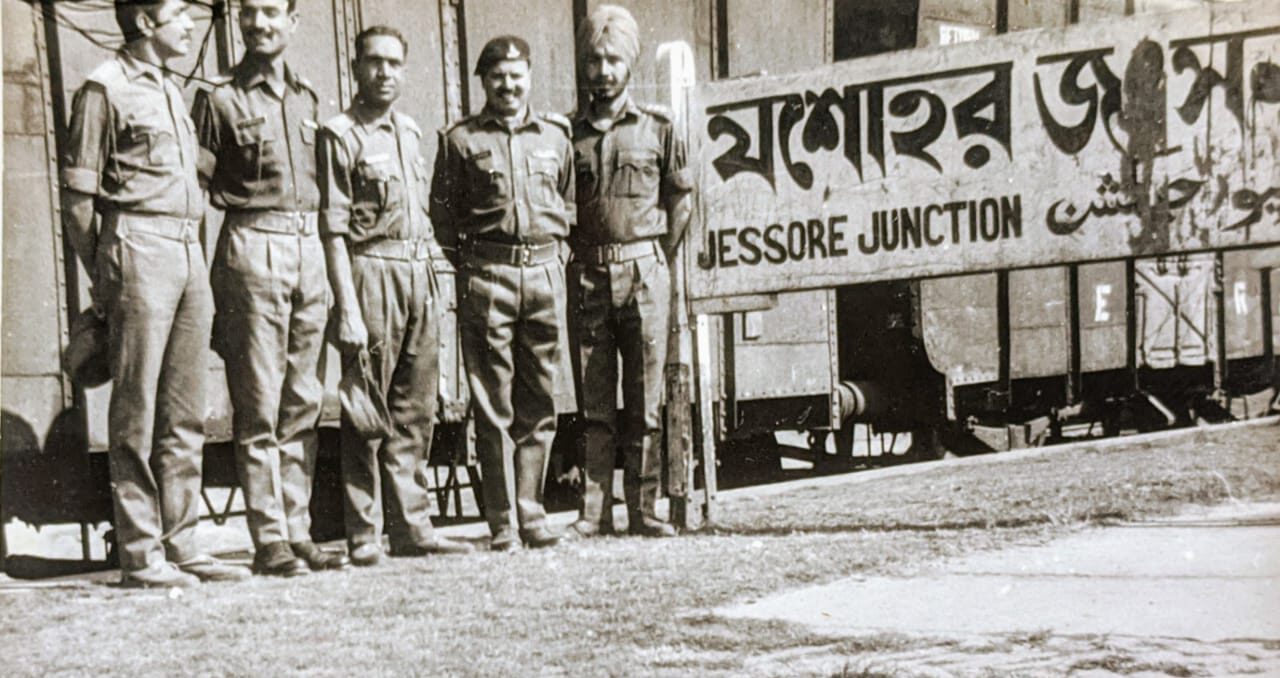
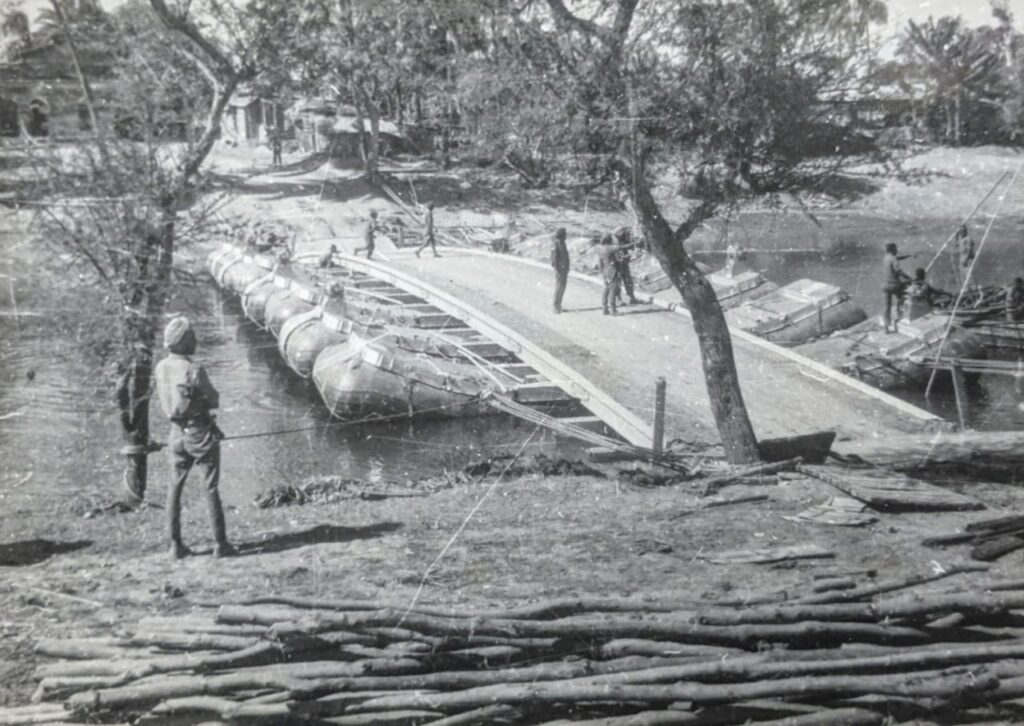
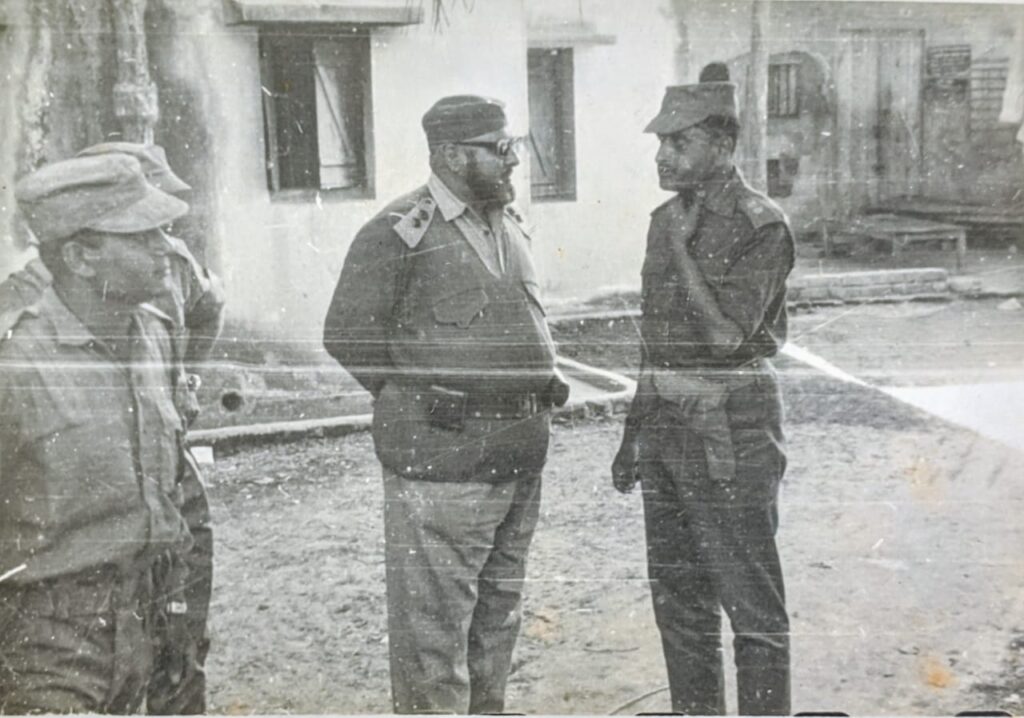
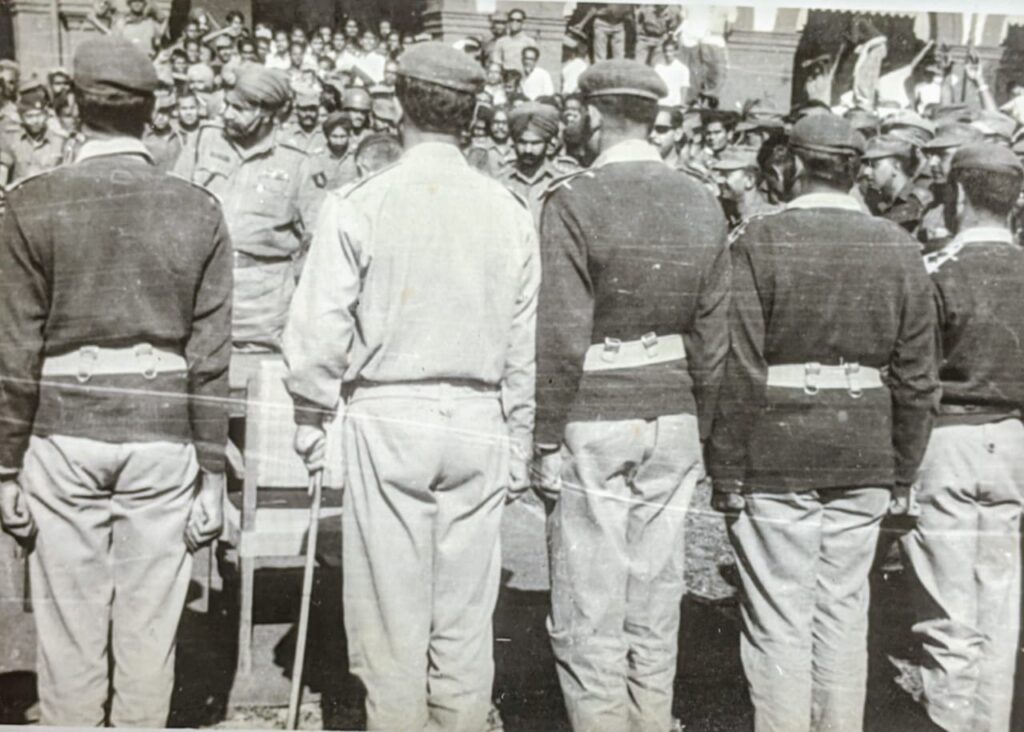
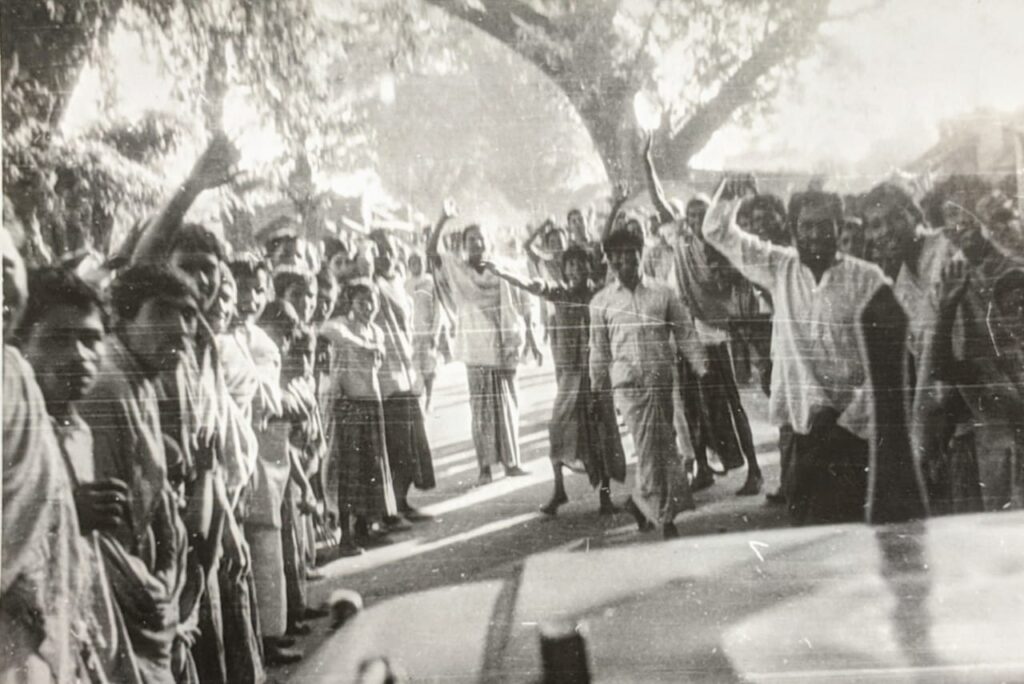
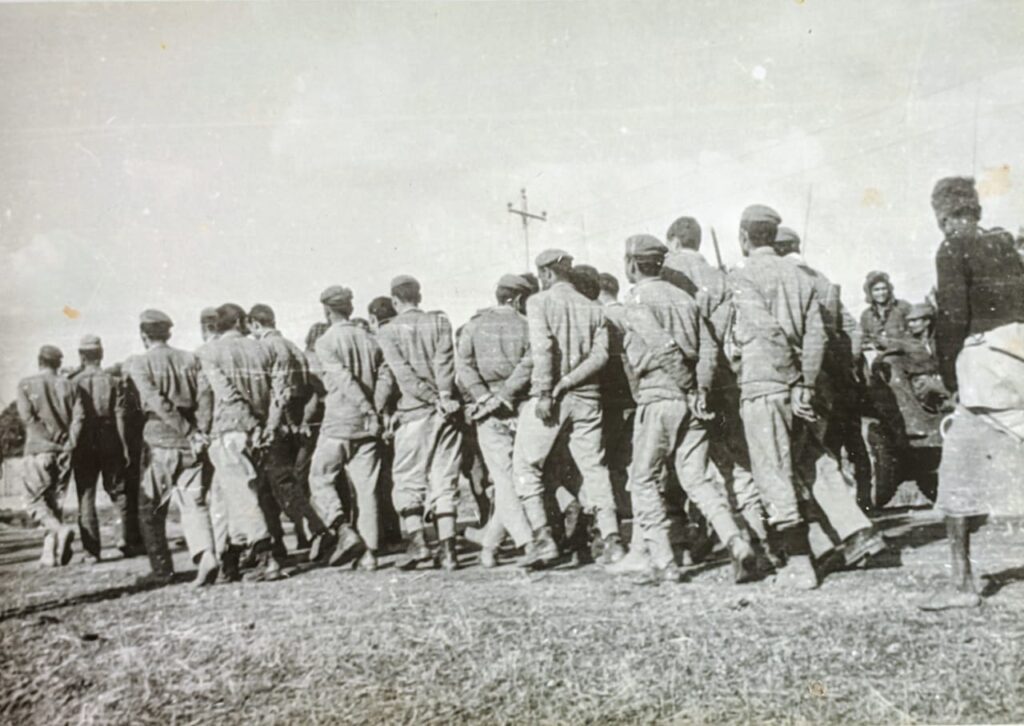
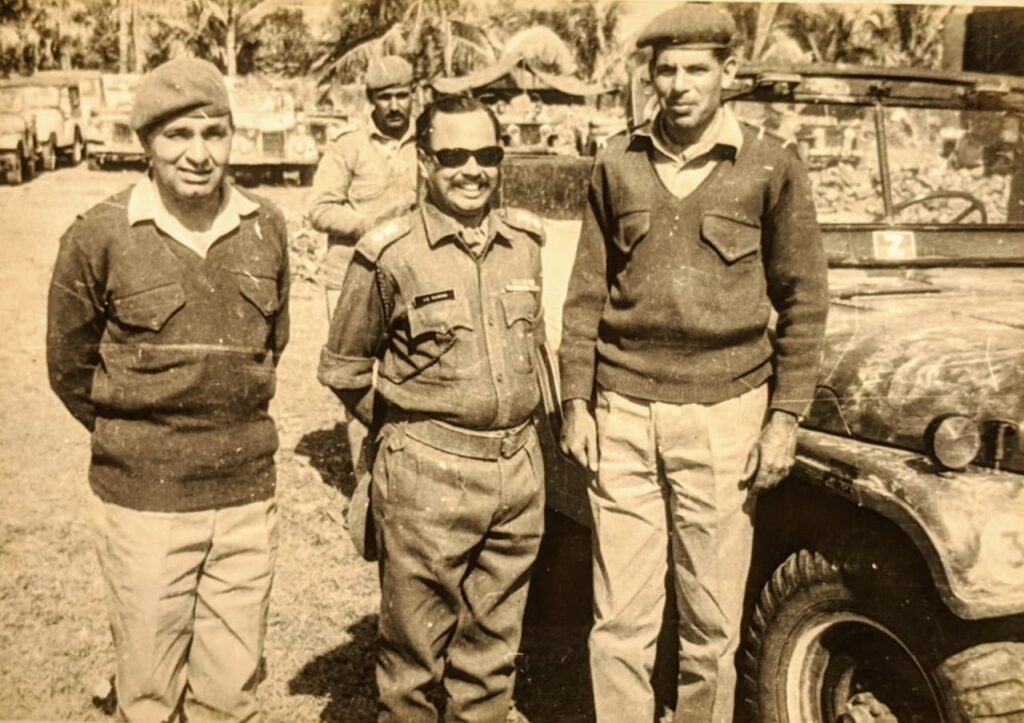
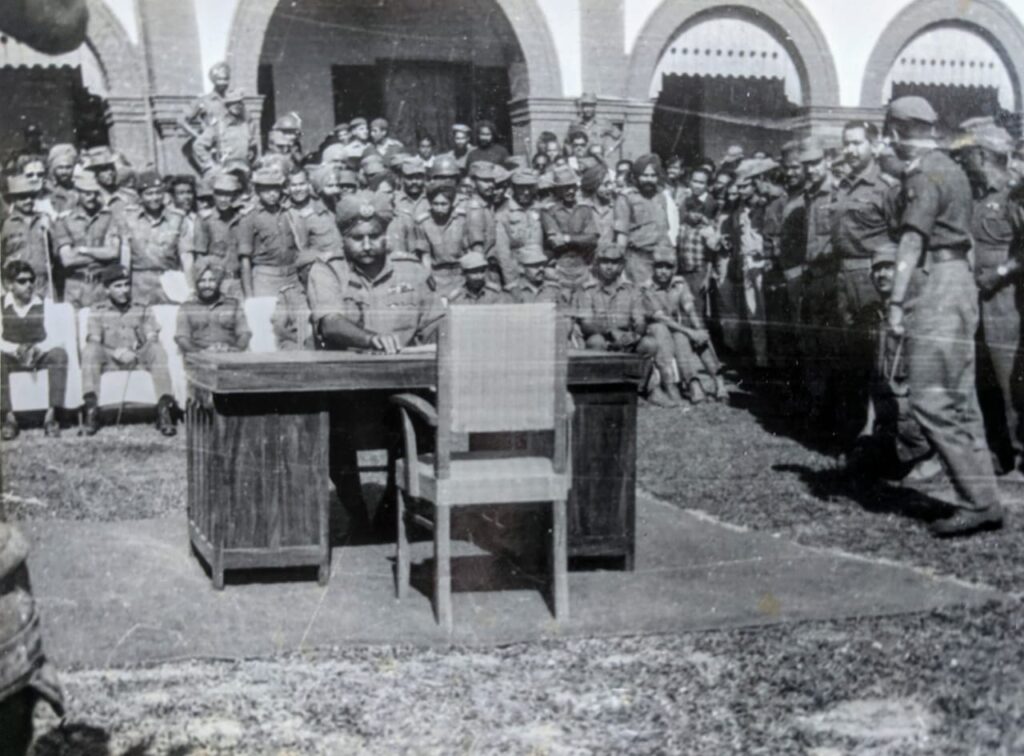





Maj. General Sabharwal
Thank you for this in-depth article. I do not process to understand the technical aspects of the article but it has left me in awe of men in uniform. Thank you Sir for your service, those that continue to keep the borders safe and those that have laid down their lives so we may be safe.
Salute and Jai Hind
Excellent. My first read on 71 war by Arty officer. Enjoyed the narration. Thanks
Thank you general, for vivid description of that war 50 years ago. On swernim jayanti of bagla desh liberation we got a chance to pay homage at the national war memorial, to all who sacrificed themselves in line of duty including my brother who was in Hilli .Never got these details then as he didnot return but feels good now to hear these stories of bravery.